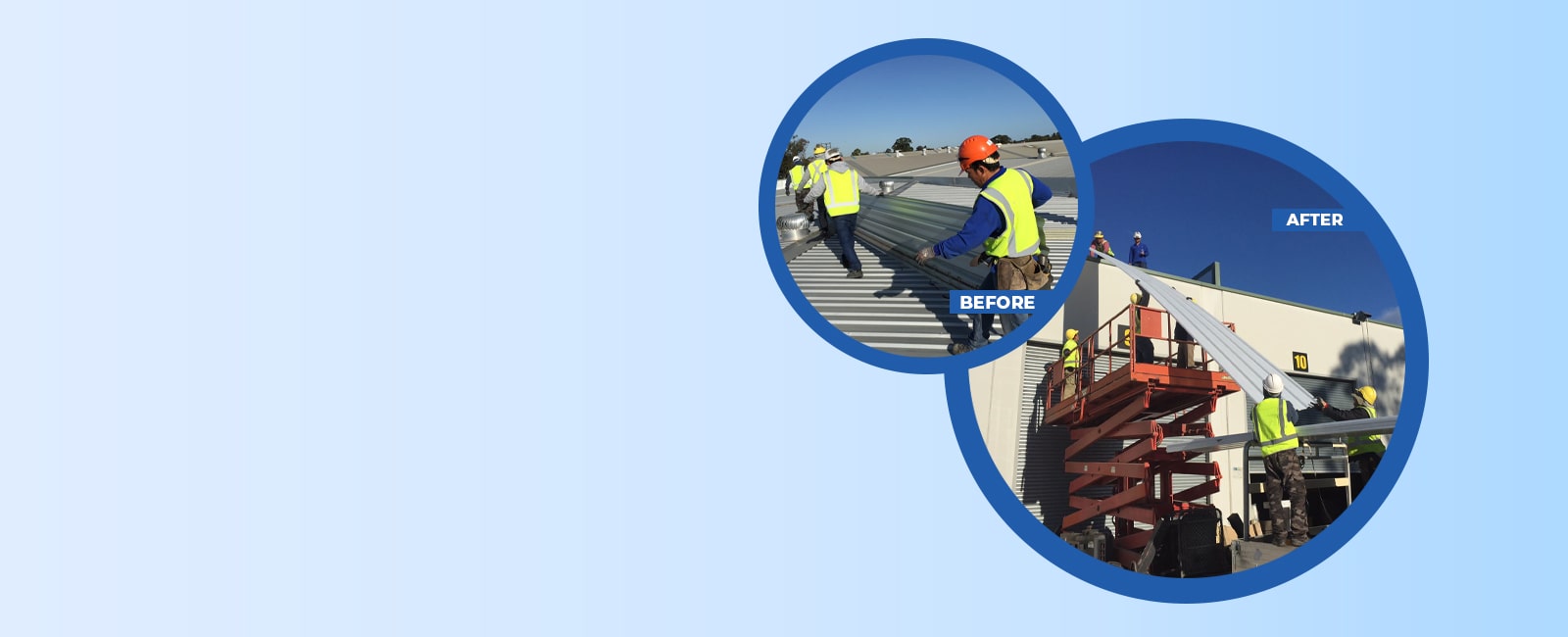Why Roof Restoration is Important
1. Protecting Your Home
The first line of defence against external elements such as rain, wind, snow, and sunlight is your roof. These elements can cause damage to your roof over time, resulting in leaks, structural difficulties, and even mould growth. By investing in roof restoration, you can ensure that your house is well-protected and avoid future costly repairs.
2. Extending the Lifespan of Your Roof
Regular roof care and restoration can considerably extend your roof’s lifespan. Roofs can acquire cracks, loose tiles, or deteriorated flashing over time, compromising their structural integrity. By correcting these issues as soon as possible through restoration, you can avoid future damage and extend the life of your roof.
The Roof Restoration Process
1. Inspection and Assessment
A comprehensive inspection by a competent roofing contractor is the first step in roof restoration. They will inspect your roof, identify any problems, and provide you with a thorough report on the repairs or restoration work that is required.
2. Cleaning and Preparation
Before beginning any restoration work, your roof must be properly cleaned. This includes removing any loose or damaged materials as well as dirt, debris, and moss. A clean surface ensures that the restoration products adhere well and improves the overall appearance.
3. Repair and Replacement
After cleaning the roof, the following step is to repair or replace any damaged or deteriorating components. Fixing leaks, repairing broken tiles, reinforcing weak locations, and correcting structural difficulties are all possibilities. Before adding any protective coatings or finishes, it is critical to solve these issues.
4. Protective Coatings and Finishes
Your roof will be available for protective coatings and finishes once the necessary repairs have been made. These coatings serve as a barrier against water, UV radiation, and other environmental variables. They contribute to the longevity, energy efficiency, and overall aesthetic of your roof.
Choosing the Right Roof Restoration Professional
1. Experience and Expertise
When choosing a roof restoration professional, make sure they have a proven track record and vast industry experience. Look for roof restoration specialists who have completed similar tasks successfully.
2. Licensing and Insurance
Check that the contractor has all of the required licences and certificates from your local authorities. Additionally, make certain that they have enough insurance coverage to safeguard you and their staff in the event of an accident or damage during the restoration process.
3. References and Reviews
To assess the contractor’s reputation, ask for references from previous clients and examine online evaluations. Positive comments and reviews show a dependable and trustworthy professional who produces high-quality results.
4. Detailed Written Estimate
Obtain detailed written estimates from various contractors that explain the scope of work, materials to be used, timelines, and costs involved. Compare these estimates in order to make an informed selection and select the one that best meets your goals and budget.
Maintaining Your Restored Roof
1. Regular Inspections
Schedule frequent inspections of your restored roof to catch any problems early. Examine the area for evidence of damage, leaks, or loose tiles. Prompt repairs can help avoid further damage and extend the life of your roof.
2. Clearing Debris
Remove any debris that has accumulated on your roof, such as leaves, branches, or dirt, on a regular basis. This minimises blockage of gutters and drains, which can result in water pooling and subsequent roof damage.
3. Trim Overhanging Trees
Trim any overhanging branches near your roof to avoid rubbing against the surface during high winds or storms. Falling branches can do serious damage to your roof, so keep them clipped and at a safe distance.
4. Keep Gutters Clean
Cleaning your gutters on a regular basis will maintain adequate water flow and drainage. Clogged gutters can cause water backup, which can cause damage to your roof. Remove leaves, twigs, and other debris from your gutters to keep them functioning properly.
5. Address Roof Leaks Immediately
Address any indicators of a leak promptly, such as water stains on the ceiling or walls, dampness, or mould growth. Ignoring roof leaks can cause more damage to your roof as well as the interior of your home. Contact a skilled roof repair technician to locate and repair the leak.
Conclusion
In conclusion, roof restoration is an important part of maintaining the integrity and durability of your property. It shields your home from the weather, increases the lifespan of your roof, and improves its overall beauty. You can assure a long-lasting and well-protected roof by following the necessary steps for roof restoration and regular maintenance.
Choose a reliable and competent roof restoration contractor, conduct frequent inspections, and fix any issues as soon as possible. As a result, you will have a functional and visually beautiful roof that will bring comfort and security to your home.





